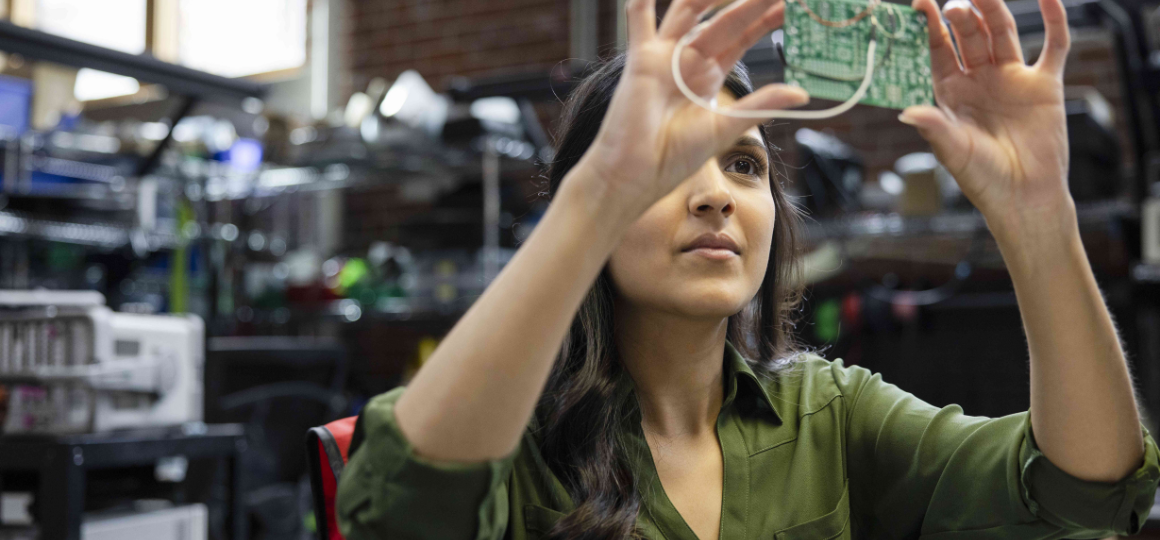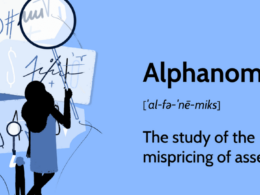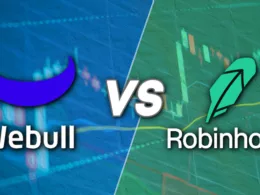Extreme Ultraviolet (EUV) Lithography Is Used in Semiconductor Device Fabrication to Make Integrated Circuits
Extreme ultraviolet (EUV) light technology is a key driver of change in the semiconductor industry. Since the beginning of the semiconductor age, lithography, the method used for printing intricate patterns onto semiconductor materials, has advanced by using ever-shorter wavelengths. EUV lithography is the shortest yet.
In development for decades, the first EUV lithography machine was bought in batches and ready for production from ASML, the Dutch semiconductor company.
KEY TAKEAWAYS
- Extreme ultraviolet (EUV) light has a very short wavelength, close to that of an X-ray.
- EUV light is used in microchip lithography to print patterns onto silicon wafers.
- ASML, a Dutch company, is pioneering this technology and is the only source of EUV lithography systems.
- The short wavelength of EUV light allows for the manufacturing of some of the most powerful microchips available.
What Is EUV Lithography?
EUV light refers to the extreme ultraviolet light used for microchip lithography, which involves coating the microchip wafer in a photosensitive material and carefully exposing it to light. This prints a pattern onto the wafer, which is used for further steps in the microchip design process.
The history of computers is the history of the semiconductor industry, which is the history of the relentless pursuit of miniaturization. In the sector’s initial phase, from the 1950s to the mid-’80s, photolithography was used to project circuit patterns onto silicon wafers using UV light and photomasks.
During this time, Moore’s Law—the 1960s mandate that the number of transistors on a microchip would double every two years—started coming up against the physical limits of this process. This meant that the staggering increases in computing power and reduced technology costs for consumers were also in danger of hitting a limit. From the 1980s to the 2000s, deep ultraviolet (DUV) lithography drove the next generation of miniaturization, using shorter wavelengths in the range of 153 to 248 nanometers, which allowed for smaller imprints on the silicon wafers of semiconductors.
In the lead-up to the new millennium, researchers and competing firms worldwide looked for breakthroughs in making possible EUV lithography and its even shorter wavelengths. ASML completed a prototype in 2003, though it would take another decade to develop a system that is ready for production.
Investopedia Essentials
Try the Investopedia stick Simulator.
Are you new to investing? Our virtual stock simulator teaches you how to trade in real time, helping you develop the right strategies for building and maintaining wealth.
Every few years since then, ASML has delivered the next iteration of its EUV lithography systems with more capacity for production and wavelengths down to 13.5 nanometers. This allows for incredibly precise microchip designs and the densest possible placement of transistors on microchips—in short, it enables faster computer speeds.
How EUV Lithography Works
ASML’s EUV lithography systems emit light with wavelengths of about 13.5 nanometers, significantly shorter than the wavelengths used in the previous generation of DUV lithography. Thus, finer patterns can be printed on semiconductor wafers. The most advanced microchips can have nodes as small as 7, 5, and 3 nanometers, made by repeatedly passing the semiconductor wafers through the EUV lithography system.
Though you won’t be able to follow these steps in your garage workshop to make semiconductors, they are important for understanding how the technology involved can be advanced and where potential investment funds might be best placed. First, a high-intensity laser is directed at a material (usually tin) to generate plasma (charged electrons and protons in motion). The plasma then emits the EUV light at a wavelength of about 13.5 nanometers.
The generated light is gathered and directed through a series of mirrors and optics through a mask or reticle as a circuit pattern is placed in the path of the EUV light, loosely analogous to using a stencil to paint a pattern on a board. A material called photoresist on the wafer is sensitive to EUV light, and the areas exposed to it go through a chemical change and are then etched. New materials may then be deposited in the etched areas to form the various components of the microchip. This process can be repeated 100 times with different masks to create multilayered, complex circuits on a single wafer.
After these steps, the wafer undergoes further processes to remove impurities and slice the chip into individual chips. They are then packaged for use in electronic devices.
EUV vs. DUV Lithography
While major purchases of EUV lithography systems have been driving news in the superconductor industry, given the dramatic costs involved and the technological advances it could bring, DUV lithography is still more widely used. It has the advantage of already being in manufacturing facilities with staff trained in its use.
EUV lithography, with its extremely short wavelengths of about 13.5 nanometers, allows for finer etching of smaller features on chips. For its part, DUV lithography operates at wavelengths starting at 153 nanometers. While chipmakers can use this for designs with sizes as small as 5 nanometers or less, pushing the boundaries of physics, DUV light can only be used for sub-10-nanometer sizes with a loss in resolution quality.
EUV lithography systems not only have the startup costs of newer technologies but are also inherently more expensive than the equipment and maintenance for DUV lithography. For example, EUV lithography systems installed by Intel in 2023 cost $150 million each. This cost makes DUV lithography systems preferred for uses where EUV lithography’s smaller size is unnecessary.
DUV lithography is also a known quantity: There is no need for additional training, new facilities, and other major capital investments that EUV light systems require. DUV light technology is still needed for many chips in phones, computers, cars, and robots, and it has proved robust and versatile. Its relatively simpler processes also mean that DUV lithography can produce more chips per unit of time than EUV lithography, an important point in its favor in light of the global demand for semiconductors.
Many expect DUV lithography to remain popular for years to come. This is in part because of the price of EUV lithography and the technical issues that come with any new technology. In addition, DUV lithograph technology is not stuck in place; it continues improving how it helps create the chips found in the many electronic devices of our everyday lives.
The industry is likely in a transition, and while EUV light will play an increasingly more central role in chip manufacturing, DUV lithography is still vital to the production of electronics used in our everyday lives.
Advantages and Disadvantages of EUV Lithography
EUV lithography is a relatively new technology that brings many advantages and some drawbacks to consider.
Advantages
EUV lithography brings many advantages that could lead to future developments in microchip production. Here are two of the reasons why semiconductor companies like Intel are investing so much in the technology:
- EUV light can produce more complex and fine patterns on silicon wafers, allowing more transistors to be placed on a microchip.
- EUV lithography reduces the number of pattern layers (mask count) required to create a circuit.
Disadvantages
EUV lithography has many benefits, but it’s important to consider its drawbacks as a new technology.
- EUV lithography systems are more expensive than other systems for microchip lithography.
- ASML is the only company manufacturing these systems, which could create a bottleneck for companies wishing to use EUV lithography or needing support for their machinery.
Is ASML the Only EUV Lithography Company?
Yes, ASML is the only company that makes and sells products that use EUV lithography systems for microchip lithography.
What Will Replace EUV Lithography?
Technology is frequently improving, and the demand for microchips with increasingly dense transistors continues. While EUV lithography is at its limits, research into technology that could improve upon or replace it continues. Multi-e-beam, X-ray, nanoimprint, and quantum lithography could overtake EUV lithography.
When Is EUV Light Used?
Extreme ultraviolet light is used to produce microchips. EUV lithography prints a pattern on silicon wafers during the manufacturing process.
What Is Moore’s Law?
Moore’s Law states that the number of transistors on a microchip doubles every two years. This means that computers get faster and more capable every two years, with exponential growth. The Law is named after Gordon E. Moore, a co-founder of Intel. Though it has held for many years, some predict it will end in the 2020s.
The Bottom Line
EUV light is used in microchip lithography to produce the patterns necessary to create a microchip, though at far smaller sizes than from previous lithographic techniques. However, because of its novelty, only one company—ASML—makes machines that use it, which is costly. As the technology matures, it should play a central role in future developments in microchip production.
Trade on the Go. Anywhere, Anytime
One of the world’s largest crypto-asset exchanges is ready for you. Enjoy competitive fees and dedicated customer support while trading securely. You’ll also have access to Binance tools that make it easier to view your trade history, manage auto-investments, view price charts, and make conversions with zero fees. Make an account for free and join millions of traders and investors on the global crypto market.










